Zach Sims and Ryan Bubinski founded Codecademy in August of 2011 with the goal of giving “ anyone in the world the ability to learn the skills they’d need to succeed in the 21st century.” More specifically, Codecademy teaches its users how to code in HTML, Javascript, Python, CMD Line, and SQL.
Within a year of its inception, Codecademy had raised $2.5 million in Series A funding and $10 million in Series B funding.
Now, a decade since its launch, Codecademy hosts a whopping 45 million users and has a net worth upwards of $80 million.
The question we want to ask here is, how does Codecademy use email marketing to generate leads, upgrade users to its paid plan, and reduce churn?
Let’s take a detailed look, starting with lead-gen.
Codecademy’s Lead Generation
Much like Grammarly or Headspace, Codecademy’s lead-gen efforts focus entirely on getting users signed up for its freemium plan (which does not require credit card info).
You can see this goal above-the-fold on the Codecademy’s homepage…
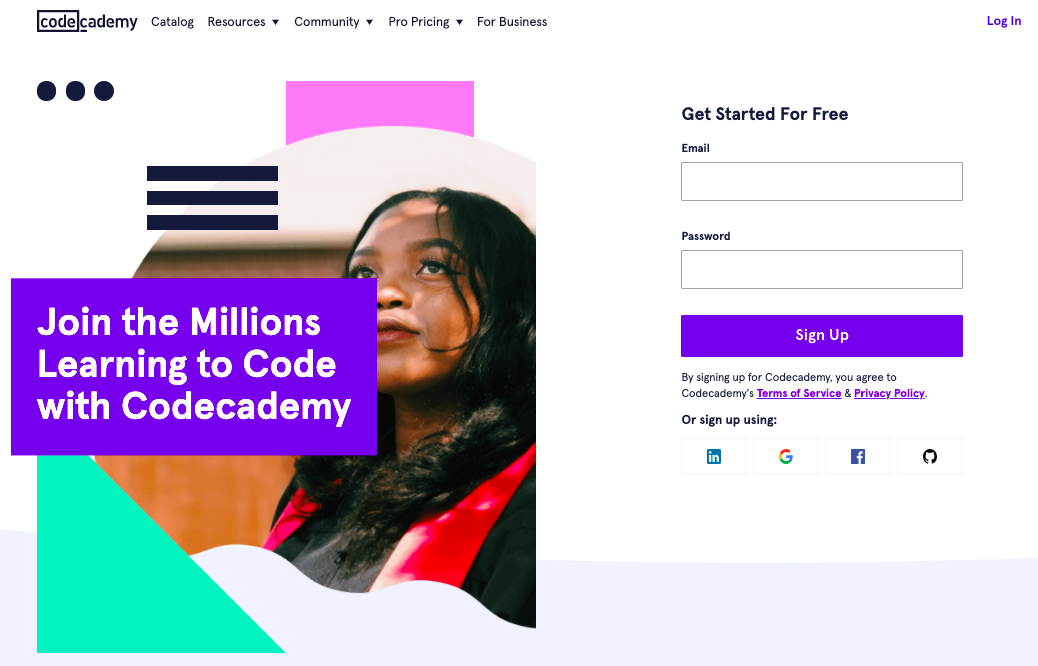
What’s cool about this CTA is that once a user signs up — either by entering their email address and password or by using a Google, LinkedIn, Facebook, or Github account — they are taken straight to this page…
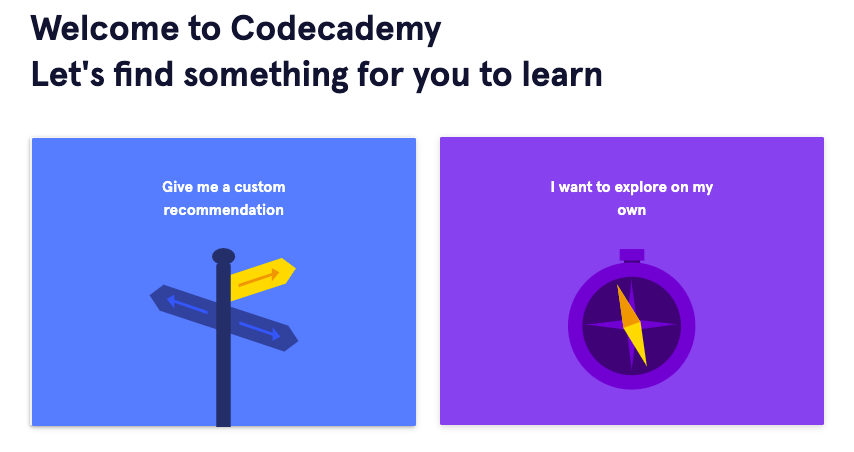
Codecademy doesn’t require new users to verify their email address or enter credit card information before exploring the freemium plan.
In fact, the first mention of the Pro plan appears on the “Search For a Topic” page (mention of paid plans is even quite sparse on Codecademy’s homepage)…

You might be thinking that Codecademy neglecting to use double opt-in will result in poor email marketing metrics or that allowing users to sign up without credit card info will result in a worse conversion rate to the Pro plan.
Those are valid concerns.
But there’s no denying the user-friendly experience that Codecademy has created — and that’s probably been a big part of the company’s monumental success.
Not using double opt-in means that Codecademy has to be consistent and thorough with its list cleaning practices. And allowing for users to sign up without a credit card means that the conversion rate from freemium to premium will take a hit.
But it seems that Codecademy has deemed its user-friendly experience as being worth it.
(And they’re not the only one… so too has Spotify, Slack, and many other subscription-based companies)
For those who remain unconvinced by Codecademy’s above-the-fold CTA, just below it, there’s a quiz that visitors can take to guide them toward getting started (check out our quiz funnels guide over here)…

If website visitors browse through Codecademy’s “Catalog” or “Resources”, they’ll consistently come across similar CTAs that push them to either take the quiz or sign up for a free account.

Codecademy also runs Facebook ads (and likely runs ads elsewhere as well) that drive people directly to their paid plans.
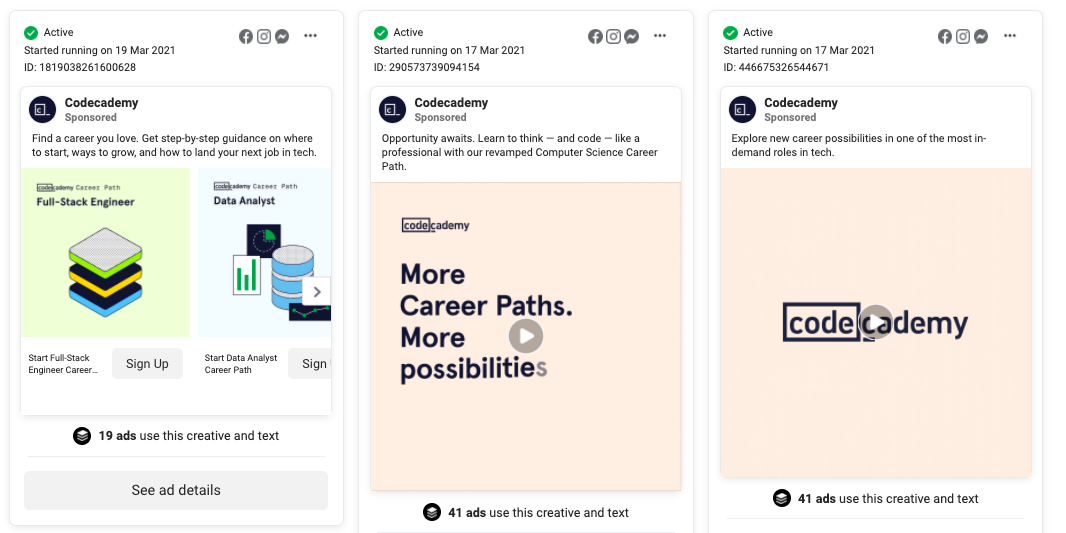
Once someone signs up for Codecademy’s free plan, they are sent a welcome email — let’s talk about that next.
Codecademy’s Welcome Email
| Subject | Welcome to Codecademy | |
| Sent | Immediately after signup | |
| CTA |  |
Back in May of 2020, when we originally signed up for Codecademy’s freemium plan, here’s the first email we received…

The pros of this email are that it welcomes the user, gives a brief introduction to Codecademy’s mission, and then provides multiple different starting points.
The con is that it might provide too many starting points…
Generally speaking, when you give new users a lot of options like this, they’re less likely to take action at all (because of the paradox of choice)… whereas if you give them just one option — whatever the most important thing is — more people will do what you ask.
That might be why when we signed up with a new account in March of 2021, Codecademy’s welcome email was much more single-minded…
| Subject | Welcome to Codecademy | |
| Sent | Immediately after signup | |
| CTA |  |
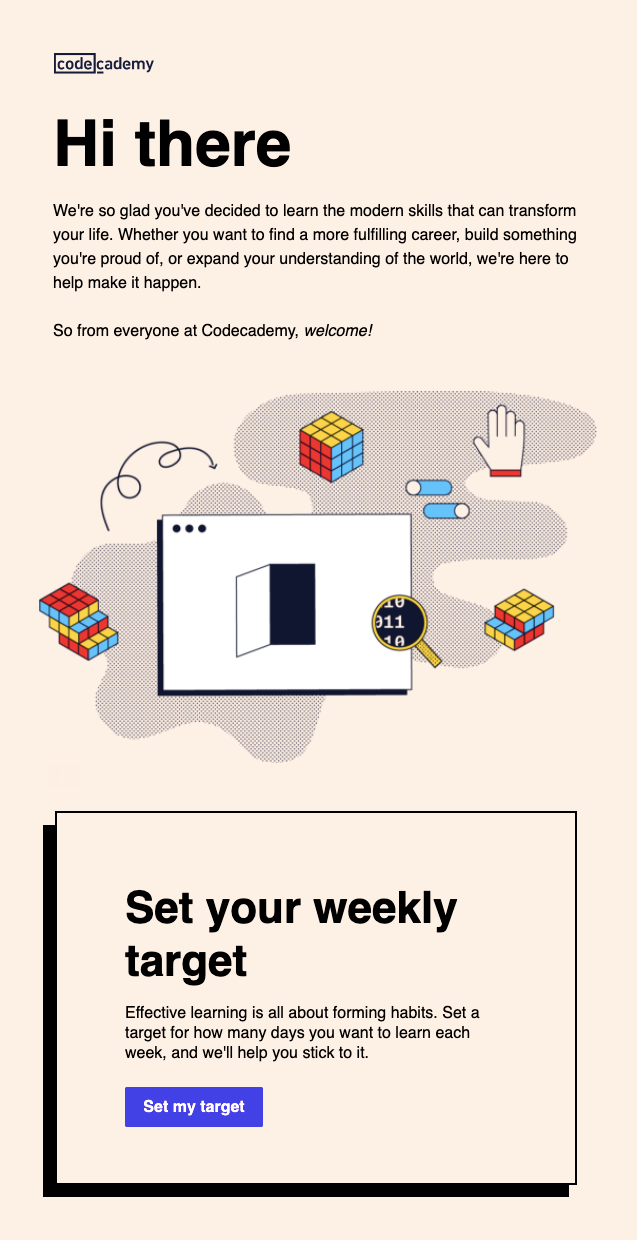
This email welcomes the new user and then asks them to set a weekly goal for how much they want to progress — this is a smart CTA because it encourages the users to build a habit with the product, which typically increases user longevity and lowers churn.
From here, Codecademy sends a series of emails to the new freemium user that encourages them to upgrade to Pro. Details in the next section.
Codecademy’s Freemium Onboarding
The day after we signed up for Codecademy’s freemium plan, we received this email…
| Subject | It’s easier than you think. We promise | |
| Sent | 1 day after freemium plan signup | |
| CTA |  |

Instead of immediately trying to upsell the new user to the Pro plan, Codecademy’s freemium onboarding emails explain its features and encourage the new user to become ingrained in its ecosystem.
The above email, for instance, explains Codecademy’s custom Learning Environment and how easy it is to get started coding (even if you’re a beginner). Even the subject line is, “It’s easier than you think. We promise.”
One day later we received an email with the same goal as the first — to get new users using Codecademy.
| Subject | What’s your programming personality? | |
| Sent | 1 day after the previous email | |
| CTA |  |
This email could also be used to segment Codecademy’s email list by interest — web development vs. game development vs. mobile development, etc.
And while we’re not sure if Codecademy uses its “programming personality quiz” in that way, segmentation is something that we highly recommend — check out our free guide to email segmentation over here.
One week later we received the following email, introducing us to Codecademy’s community.
| Subject | Don’t go it alone | |
| Sent | 1 week after the nudge to explore courses | |
| CTA |  |
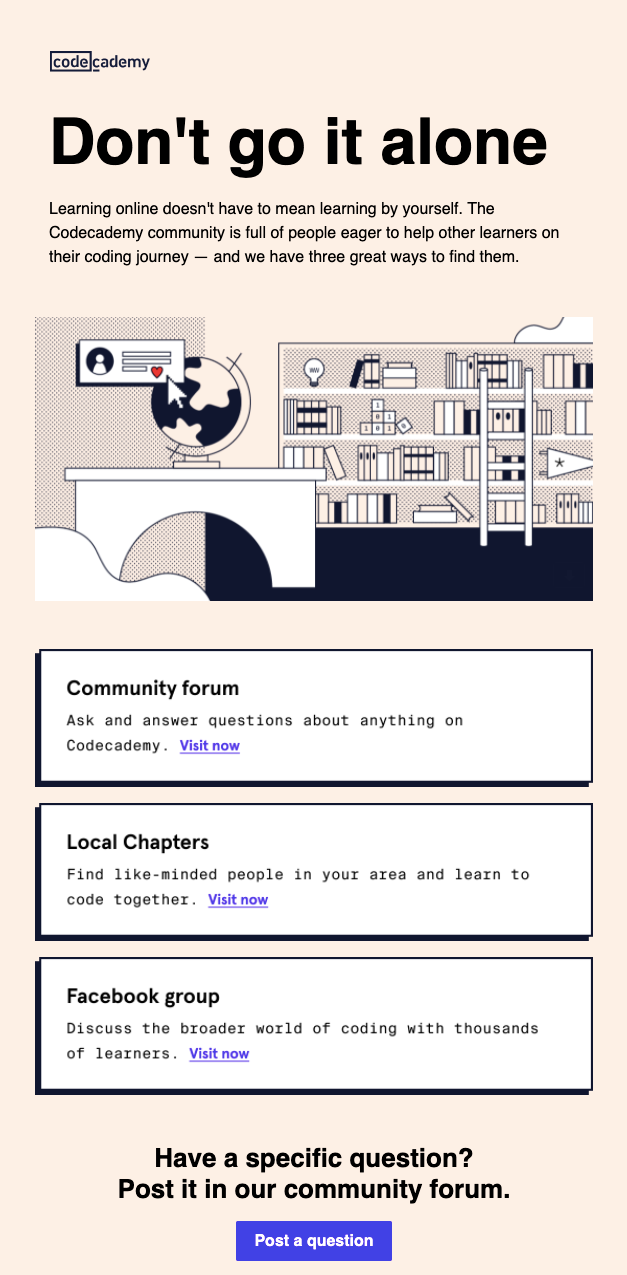
Again, this email makes an effort to get the new user involved in Codecademy’s ecosystem… because the more entangled the new user becomes, the more likely they are to stick around and even upgrade to the Pro plan.
That’s the genius of building a community for a subscription service like Codecademy — together, users create a sense of belonging that orbits around the brand. That increases user longevity and enhances the user-brand connection.
Even a Facebook group is a great place to start.
Finally, 5 days after the previous email, we received a reminder to set weekly coding goals (much like the initial welcome email)… probably because we hadn’t done so yet.
| Subject | Make learning a habit | |
| Sent | 5 days after the previous email | |
| CTA |  |
After Codecademy freemium onboarding sequence, similar sales emails trickle in a few times per month, encouraging users to upgrade to Codecademy Pro.
Here are two examples that are typical of Codecademy’s sale emails — they almost always include some sort of limited-time discount.
The first is for 20% off…
| Subject | Last chance to get an additional 20% off Pro | |
| Sent | After 3 discount offer emails | |
| CTA | 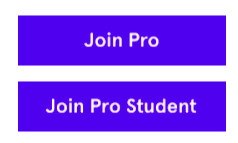 |
And the second is a New Year’s sale for 21% off…
| Subject | What can code do for you in 2021? | |
| Sent | One week after 1 Jan 2021 | |
| CTA | 

|
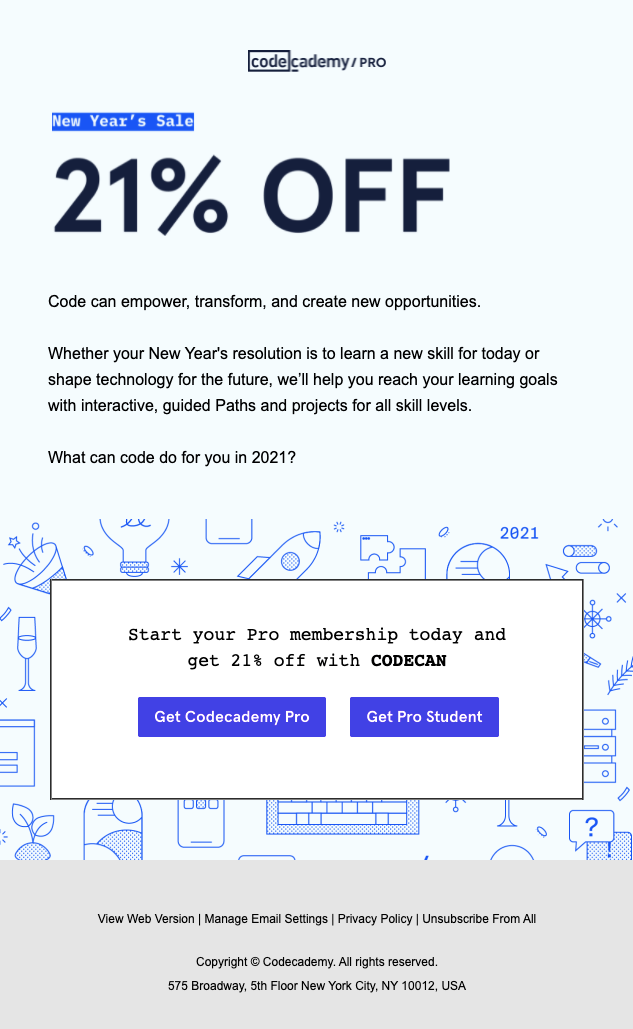
Codecademy seems to do a lot of sales during the holidays to boost sign-ups.
But that’s not all they send — Codecademy’s “Monthly Download” and “New Course” announcement emails keep things fresh and interesting.
That’s what we’re talking about in the next two sections.
Codecademy’s “Monthly Downloads”
Every month, Codecademy sends a newsletter with the subject line, “Your monthly download.”
Here’s the September email we received…
| Subject | Your monthly newsletter: September | |
| Sent | Second week of September | |
| CTA | 


|

And here’s the email we received in December…
| Subject | Your monthly newsletter: December | |
| Sent | Second week of December | |
| CTA | 


|

From the newsletters we’ve received, Codecademy has used some combination of the following topics within each “monthly download”…
- Learn Something New — Links to various Codecademy skill paths or courses.
- Explore a Feature — Links to feature updates or additions.
- Attend an Event — Links to upcoming Codecademy meetups or events.
- Expand Your Knowledge — Link to a recent Codecademy blog article.
- Get Inspired — Testimonial from a Codecademy user plus a link to their full case study.
- Pro Tip — A tip for getting as much out of Codecademy as possible.
- Fun Fact — A trivia-type fact related to coding.
- Chime In — Link to a Codecademy Twitter poll to encourage social media engagement.
If you’re marketing for a SaaS company, creating a monthly newsletter might not be at the top of your list — but still, it’s a casual and fun way to engage with your audience outside of periodic sales emails. It allows you to provide free value for your audience (both freemium and paid users), have a bit of fun, and solidify your brand image.
There’s a lot of value in that.
Codecademy’s New Course Announcements
One type of email that we received a lot during our time as Codecademy subscribers was new course announcements.
It’s obvious that Codecademy is always hard at work creating fresh content for their service… and they’re not shy about it.
Here’s an email we received from Codecademy announcing a new Skill Path.
| Subject | New Skill Path: Design Databases With PostgreSQL | |
| Sent | Sporadically, anytime there is a new launch | |
| CTA | 
|
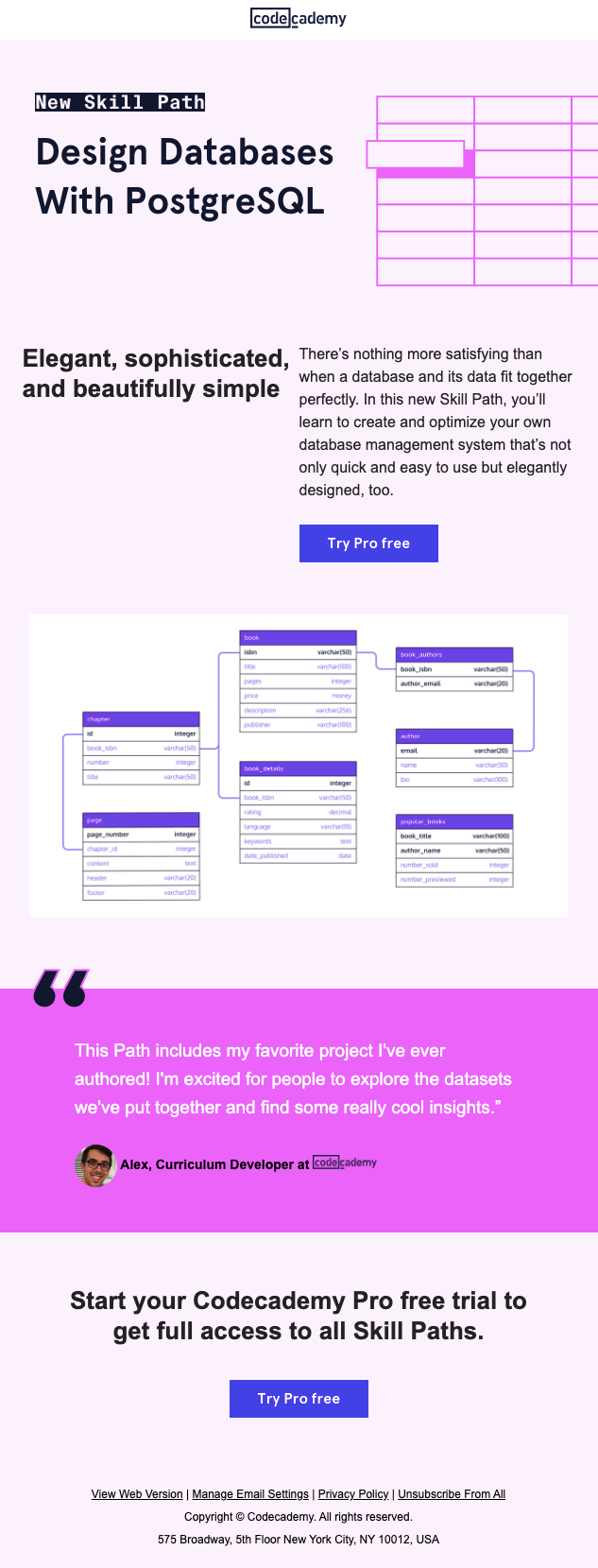
And here’s another example of a free course that Codecademy had launched.
| Subject | New course: Create a Professional Website with Velo by Wix | |
| Sent | Sporadically, anytime there is a new course launched | |
| CTA | 
|

These emails accomplish a few things for Codecademy.
First, they give the user the sense that Codecademy is always working to improve their service. And that makes for a powerful brand image.
We don’t know about you, but our favorite companies are the ones that are constantly changing and iterating — whether it’s the local restaurant that’s always changing their menu or the iOS app that is consistently adding new content.
Those are the companies that consumers love.
And so it’s smart for Codecademy to announce each new improvement, iteration, or new course.
Second, these emails give Codecademy a chance to indirectly encourage people to upgrade to Pro when, as in the first example, they announce new content that’s only available to Pro members.
Point is, there’s benefit in a business talking about how it’s trying to improve. So don’t shy away from patting yourself on the back when those changes are genuinely beneficial to your audience.
Codecademy’s Abandoned Cart Email
As with all of our other email marketing teardowns, we wanted to know what email(s) Codecademy sends when a user starts to sign up for a Pro account but then abandons before completing the subscription.
So we did just that.
This is the first email we received after abandoning our cart, which prompts us to finish signing up and reminds us that the first 7 days are free.
| Subject | Don’t forget your Pro membership | |
| Sent | 2 days after the cart was abandoned | |
| CTA | 
|
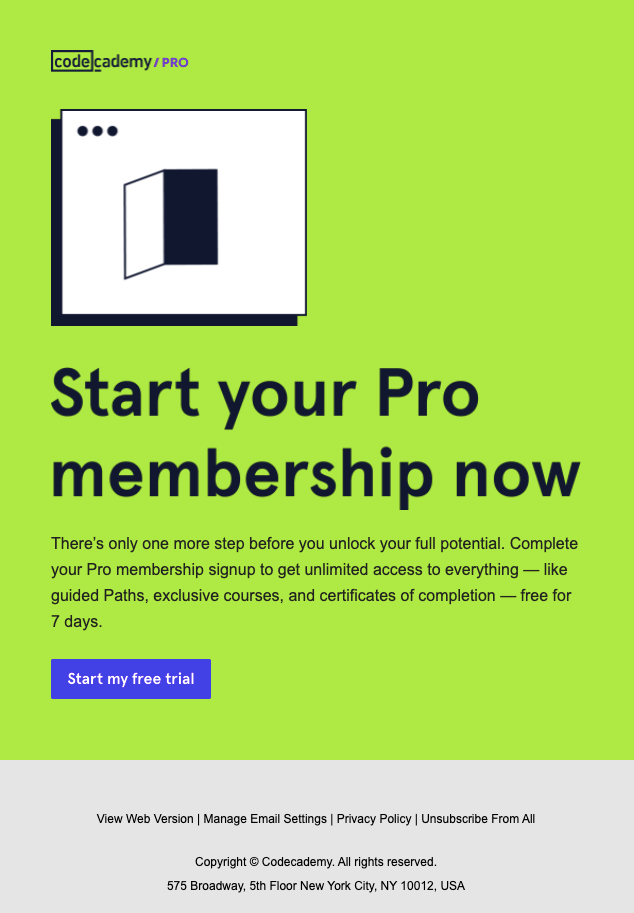
And two days later, we received this email, which adds a 15%-off incentive…
| Subject | Dive in deep for less | |
| Sent | 2 days after the previous cart abandonment email | |
| CTA | 
|
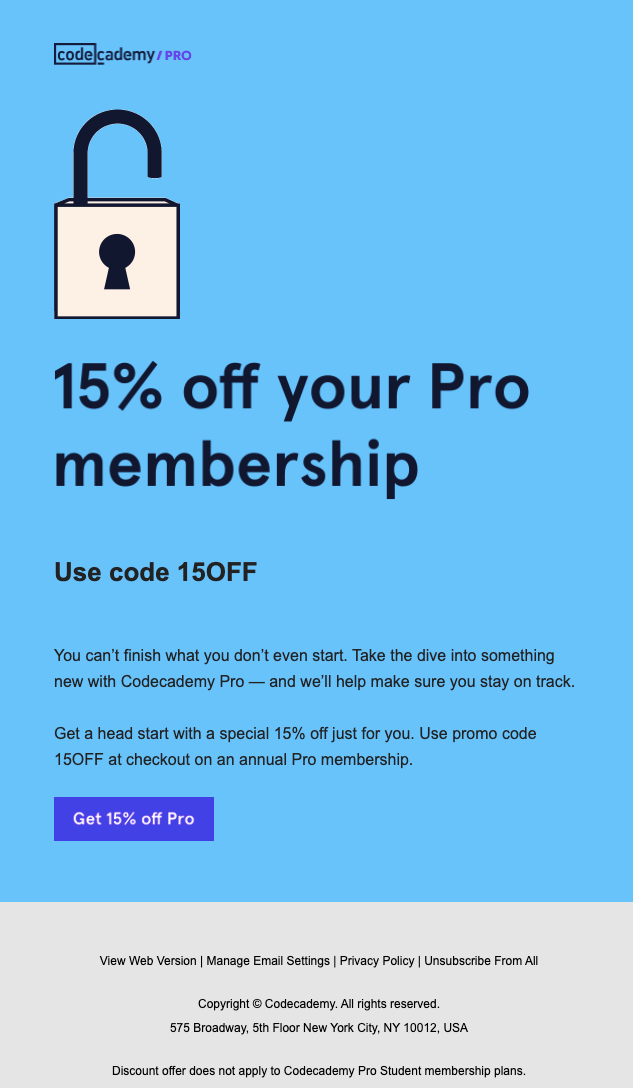
This 2-part abandoned cart follow-up strategy is pretty simple — and something that any business could implement — and also probably pretty effective.
If you’re struggling to craft abandoned cart emails for your own business, sending a day-one reminder and a 3-day-after discount is a great place to start.
Then keep and eye on your conversion rates and adjust as needed.
Codecademy’s Paid Onboarding Sequence
We’ve talked about Codecademy’s email marketing practices for welcoming new users, encouraging upgrades, and recapturing cart abandoners.
But what sort of emails does Codecadamy send if you actually sign up for their Pro plan?
That’s what we wanted to find out next. So we pulled out our wallets and paid for a subscription.
Here’s the first email we received immediately after signing up.
| Subject | Welcome! Here’s what to expect from your Codecademy Pro trial | |
| Sent | Immediately after signup for paid plan | |
| CTA | 
|
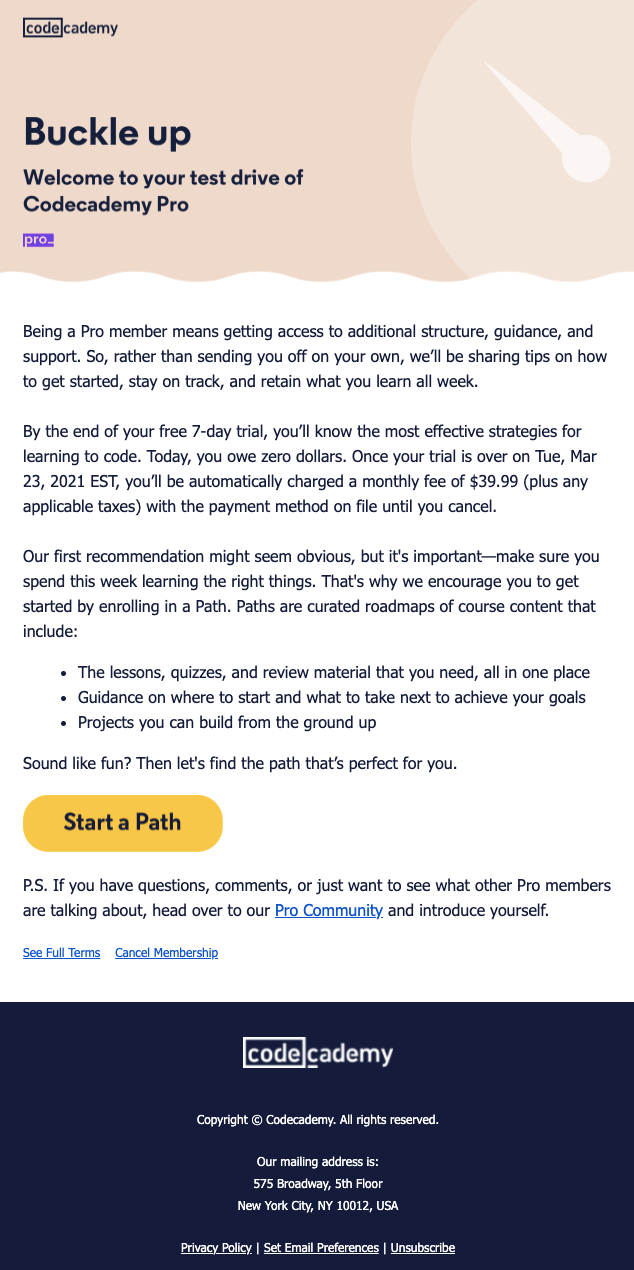
As with all of the most effective marketing emails, this email encourages the new Pro member to do just one thing.
That is, sign up for a “Path” that’ll help the user learn what they want to learn.
This is important because if a user signs up for a “Path” and engages with their new membership, they are less likely to cancel in 7 days than someone who remains stagnant.
One day after our new Pro subscription, we received this email…
| Subject | Three learning strategies you need to know | |
| Sent | One day after Pro subscription | |
| CTA | 
|
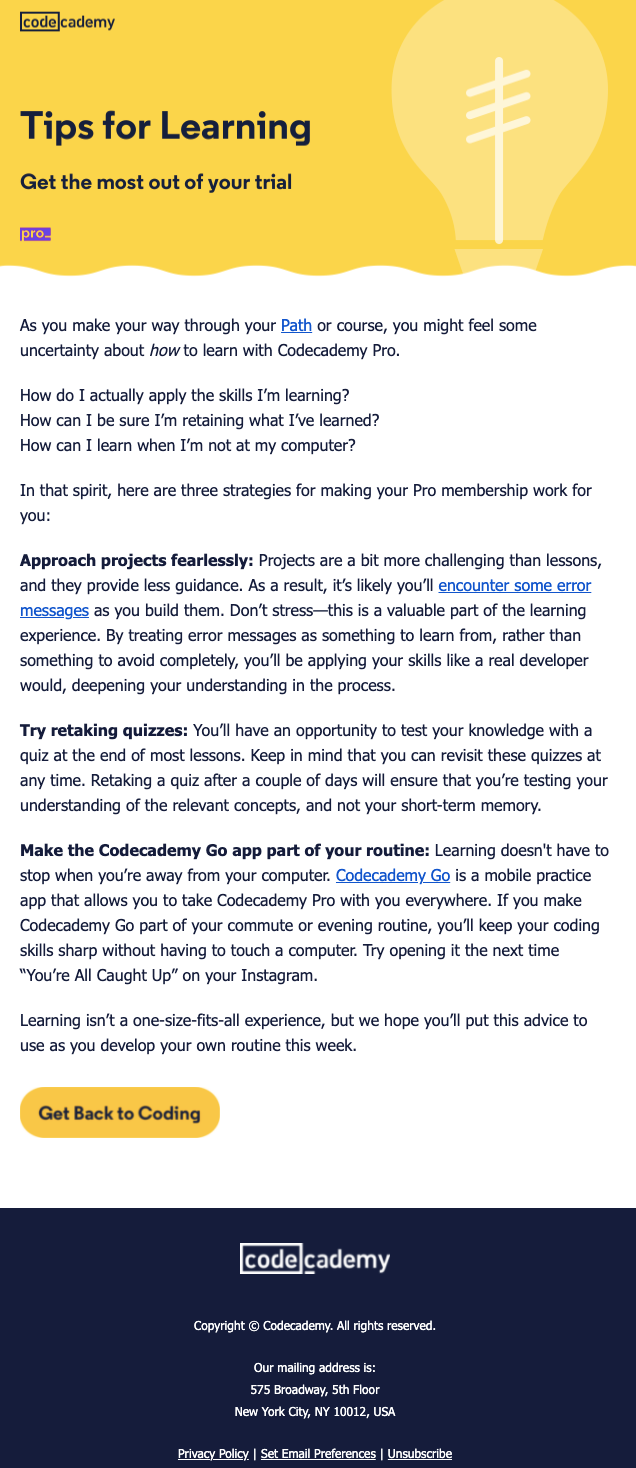
The three strategies in this email are a way for Codecademy to explain their service to new users and potentially increase retention.
They encourage the user to be fearless about approaching new projects, retake quizzes as often as needed, and — get this — “Make the Codecademy Go app part of your routine.”
Again, Codecademy is trying to ensure that new members stick around after the 7 day trial.
Also, one thing that quickly became apparent after we signed up for Codecademy Pro was how many more emails Codecademy sends to its paying members than it does to its freemium members (at least within the first month of signing up).
In January we received a grand total of 5 emails. In February, we received 3 emails.
Then in March (the month that we signed up for the Pro membership), we received a whopping 19 emails, most of which included tips and tricks around getting the most out of Codecademy.
Two days after we signed up for Pro, we received this email…
| Subject | 🔔 How to make coding a habit | |
| Sent | 2 days after Pro subscription | |
| CTA | No CTA |

The next day was a reminder that the 7-day trial would soon come to an end…
| Subject | Your Pro trial is ending soon | |
| Sent | 3 days after Pro subscription | |
| CTA | extend your plan to an annual subscription! |
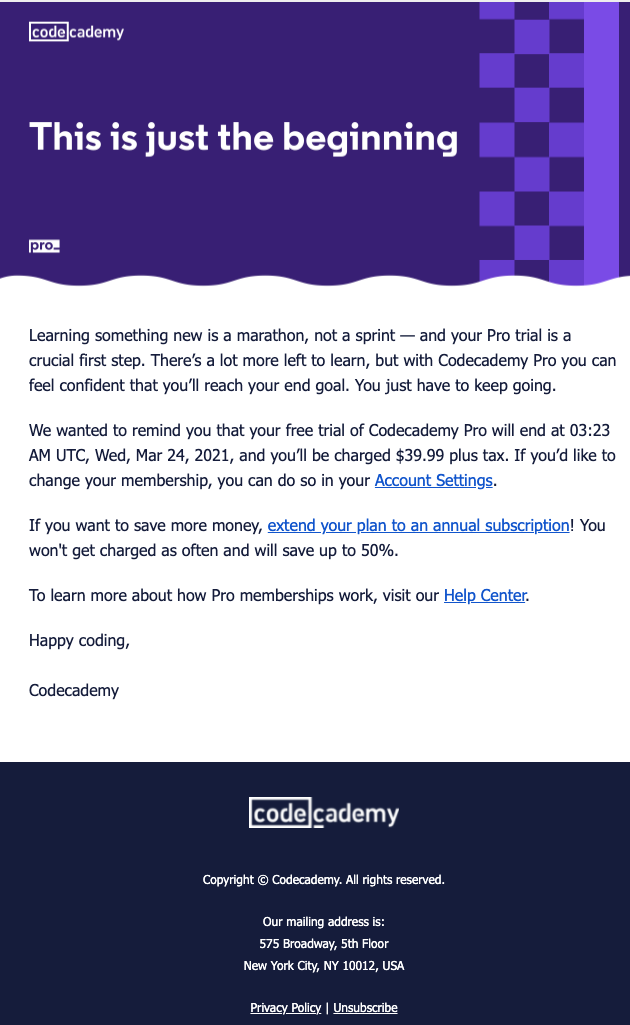
And the next was full of Codecademy success stories…
| Subject | From Codecademy to coding career | |
| Sent | 4 days after Pro subscription | |
| CTA | 
|

All in all, these onboarding emails are, as expected, indicative of a company that’s trying to emphasize the value of its service to decrease churn and increase habitual user engagement.
Other subscription-based companies should take note — if this process has worked for Codecademy, something similar could work for you.
Codecademy’s Cancellation Emails
What should you — or any subscription-based company — send to a customer when they cancel their subscription. Should you simply inform them that their account has been cancelled? Should you beg them to stay?
There’s a balance here.
And we think Codecademy has done a very good job of staying on the beam.
When we cancelled our paid subscription to Codecademy, we received the following email…
| Subject | We’re Sorry To See You Go | |
| Sent | Immediately upon Pro subscription cancellation | |
| CTA | Manage Payments |
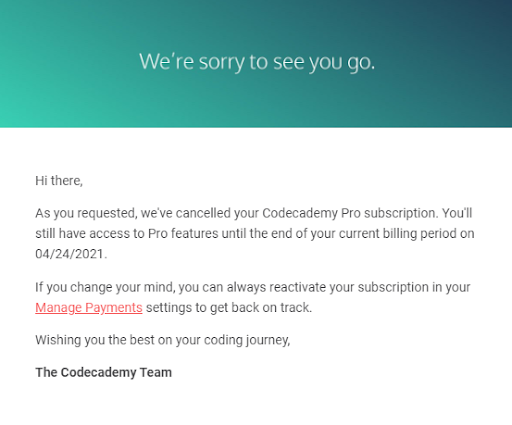
It’s simple and clear with a no-pressure offer to re-sign-up whenever the time is right.
Conclusion
Since its launch in 2011, Codecademy has found great success.
Here, we’ve taken a look at how Codecademy’s email marketing efforts have contributed to that success.
If we could boil this teardown into just a few takeaways, they’d be…
- SaaS companies should encourage habituation with their emails.
- A monthly newsletter is a great way for companies to provide value, encourage engagement, and build a brand identity.
- Businesses shouldn’t be afraid to talk about the changes and iterations they’re making to improve — those things enhance the customer’s faith in the brand.
That’s what we learned, at least.
We’ll leave the rest up to you.
discuss on twitter